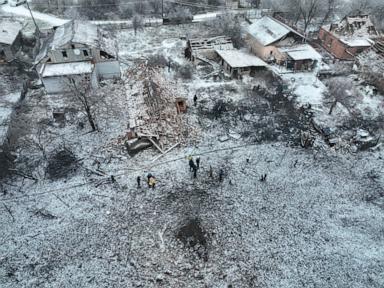
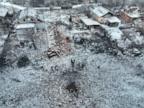

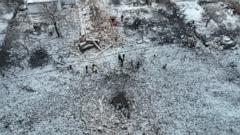
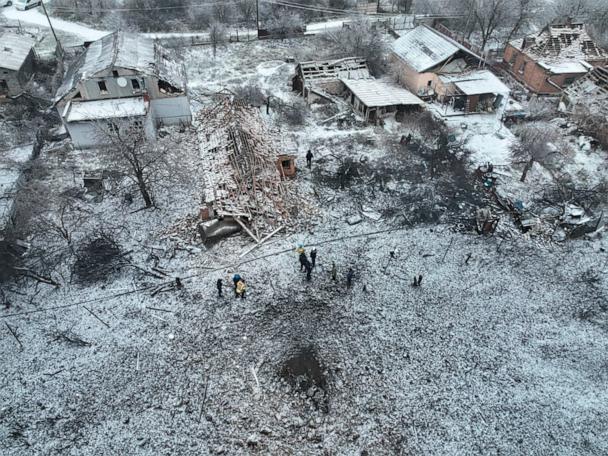
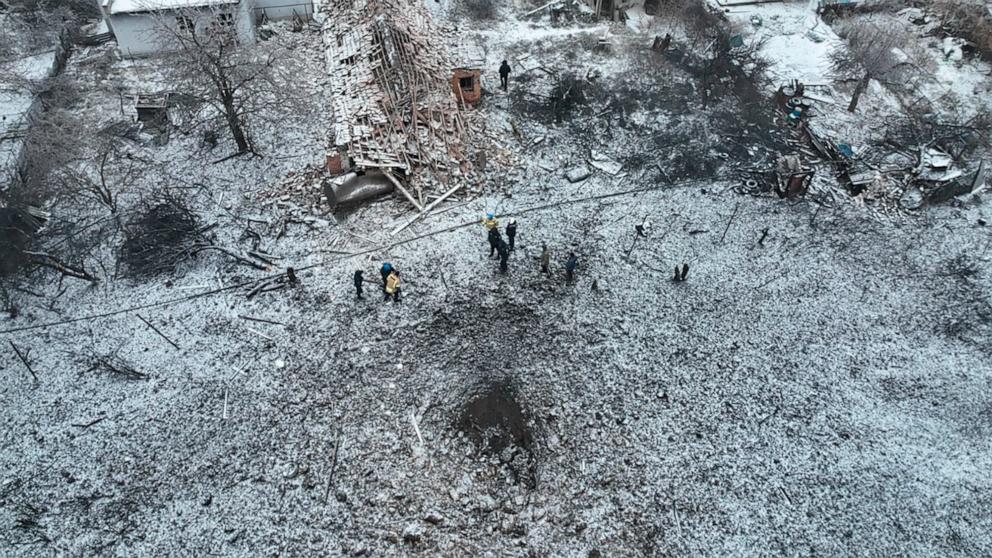
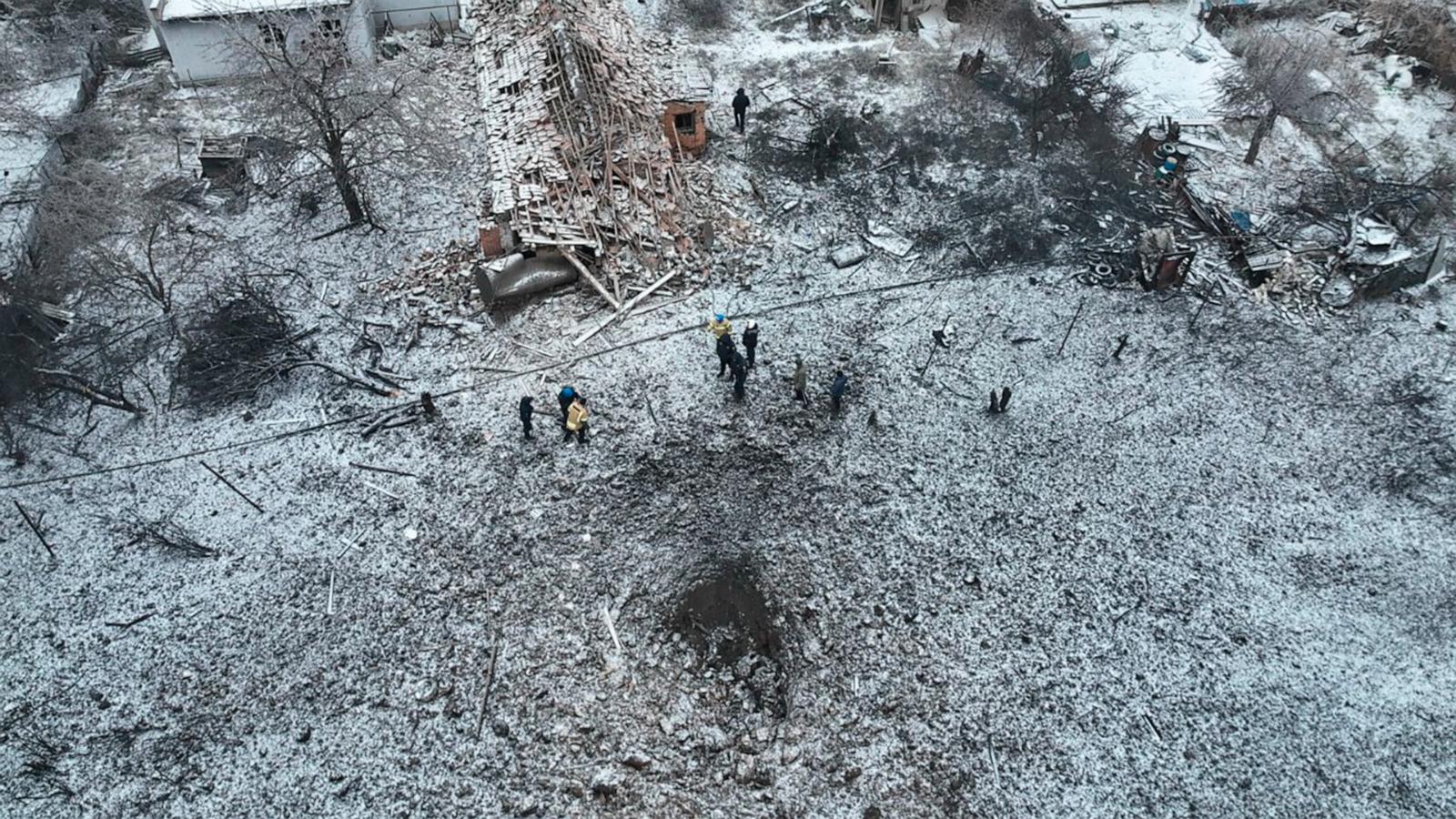
Ukraine’s Air Force said Monday it was only able to shoot down 18 of the 51 Russian missiles fired overnight at targets across Ukraine, and that 33 of the missiles could have hit their intended targets.
At least four people were killed in the latest Russian missile attack, which the Ukrainian military described as “massive.”
A major factor for the low success rate for Ukraine’s air defense in Sunday night’s attack was that Russia targeted many areas of the country that are not protected, Ukrainian air force spokesman Yuriy Ignat told ABC News.
The commander of Ukraine’s armed forces, Gen. Valerii Zaluzhnyi, said eastern and southern regions and critical infrastructure were targeted, and civilian and military facilities were hit. Notably, Kyiv was not struck in the attack. The Ukrainian capital is protected by at least one U.S.-supplied Patriot missile defense system, as well as other systems.
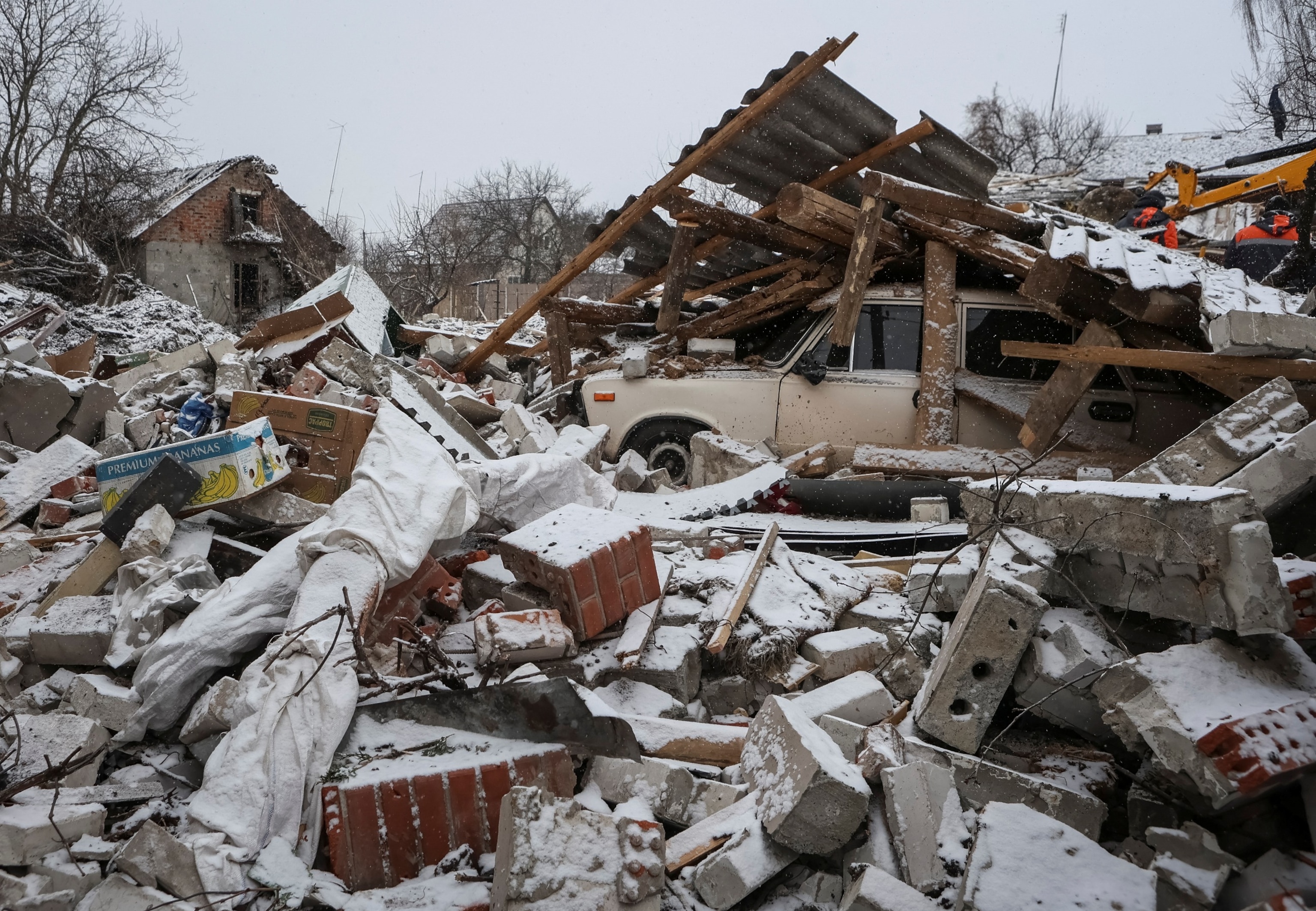
A view shows a house destroyed in a Russian missile strike in the town of Zmiiv, amid Russia’s attack on Ukraine, in Kharkiv region, Ukraine, Jan. 8, 2024.
Sofiia Gatilova/Reuters
The Russian Ministry of Defense claimed it used “high-precision” weapons, including its Kinzhal hypersonic ballistic missiles, to hit Ukrainian arms production facilities.
Ukrainian officials have not commented on how low the country’s air defense missile stocks are, but Ignat suggested other factors were at play in the Sunday night attack.
The latest missile barrage from Moscow this week comes at a time when U.S. military aid for Ukraine is running out. Ukrainian officials have for weeks been warning that if Congress doesn’t agree to additional funding, Ukraine’s missile stocks risk running dry.
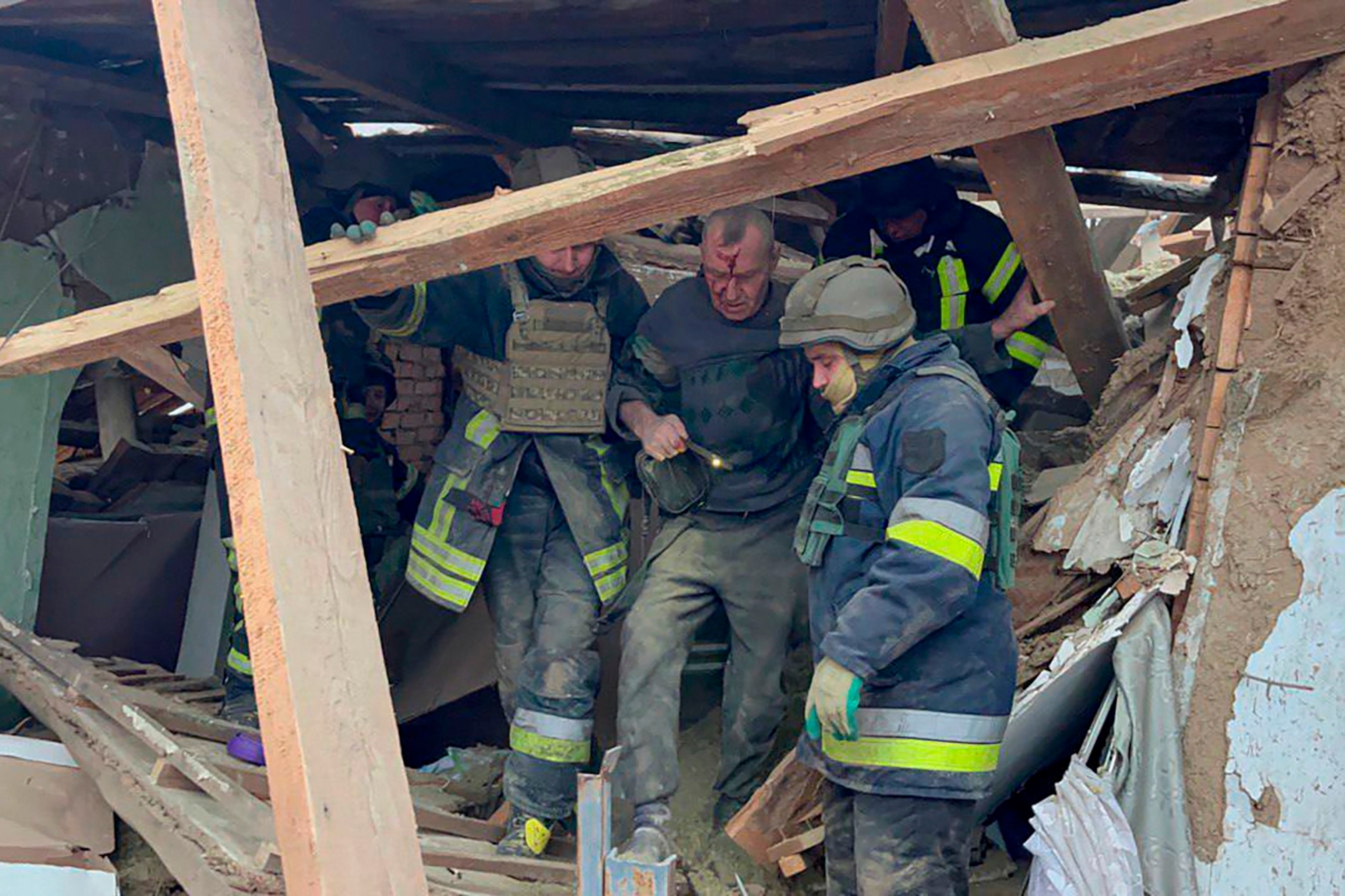
In this photo provided by the Ukrainian Emergency Service, emergency workers help a wounded man after a residential houses were badly damaged in a Russian missile attack, near Kryvyi Rih, Ukraine, Jan. 8, 2024.
Ukrainian Emergency Service via AP
A deal between the Biden administration and leading Republicans to secure an additional $60 billion in additional funding for the war in Ukraine, which is approaching the two-year mark in February, remains elusive because the two sides have not reached a separate agreement on new controls on the U.S. border.
House Speaker Mike Johnson said in a letter to the White House last week that “supplemental Ukraine funding is dependent upon enactment of transformative change to our nation’s border security laws.” Johnson has said the Republican-controlled House will not pass Ukraine aid unless there are changes to border laws.
Oleksandra Ustinova, a prominent member of Ukraine’s Parliament, said in December the military’s ammunition stocks are now running so low that units are unable to respond to Russian attacks.
Ustinova said at that time that Ukraine had started building multiple layers of defenses along parts of the front lines because if U.S. military support is discontinued, Ukraine would be moving to a much more defensive strategy in the war.
At the time, a Ukrainian military official confirmed to ABC News that Ukraine’s army had stopped “all offensive operations” in light of the shortage of munitions.
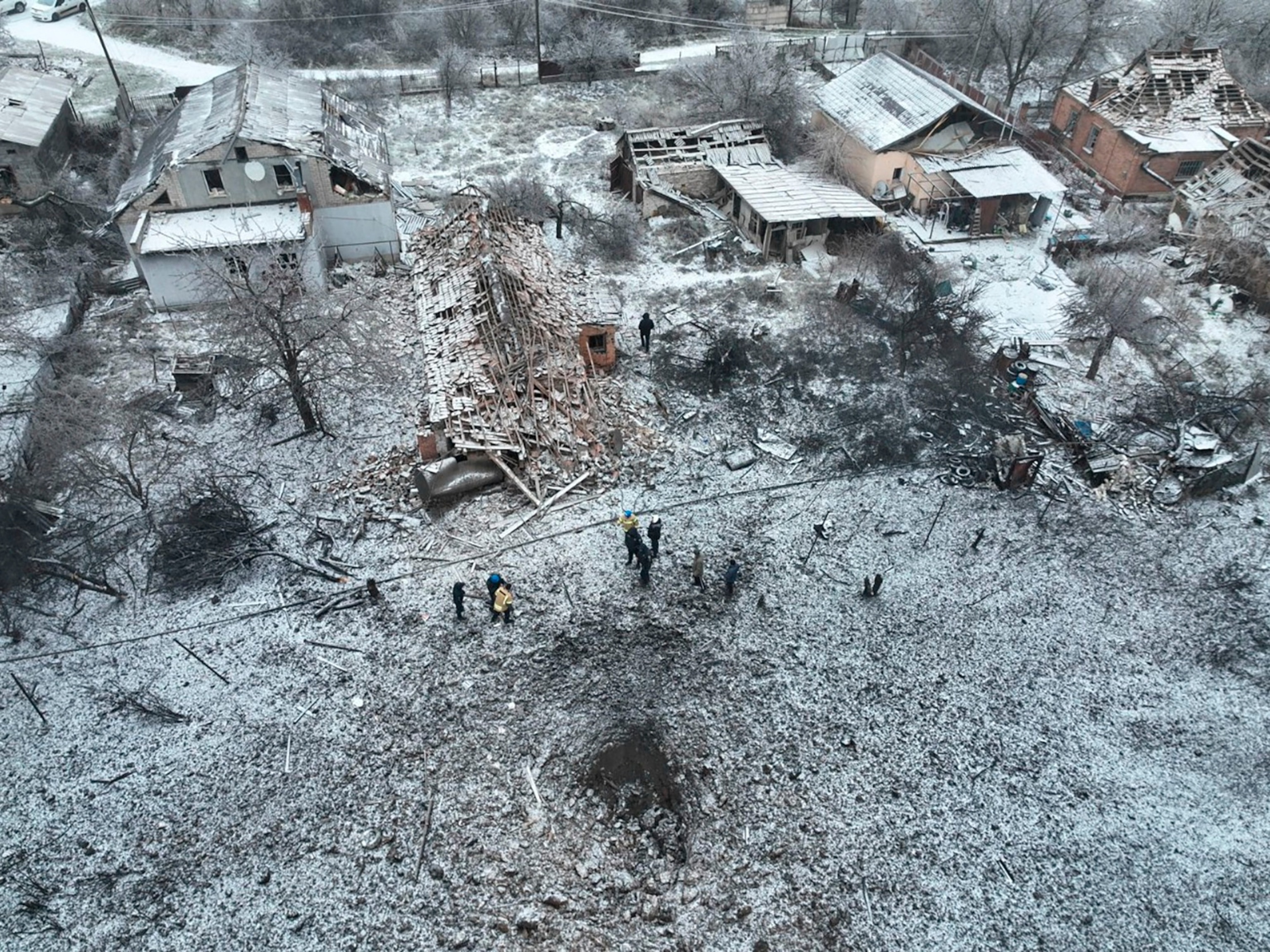
In this photo provided by the Ukrainian Emergency Service, a view of private houses damaged by a Russian missile attack in Novomoskovsk near Kryvyi Rih, Ukraine, Jan. 8, 2024.
Ukrainian Emergency Service via AP
The success rate — 35% — for Ukraine’s air defense in the latest barrage of Russian missiles fired is much lower compared to previous Russian attacks, according to previous reports from Ukraine’s air force.
On several occasions last year, Ukraine’s air force claimed a near-perfect shoot-down rate of Russian missiles and drones.
On Dec. 29, 2023, Ukraine’s air force said it shot down 71% of the missiles fired by Russia, and a few days later, on Jan. 2, it shot down 72% of the missiles used in an attack by Moscow. The shoot-down rate for missiles during these two previous attacks was worse than on many occasions last year, but not as low as Sunday night.
Russia stockpiled missiles throughout the fall, according to Western officials, and it’s expected that these missile and drone strikes will continue, just as harsh winter conditions hit Ukraine.
U.S. and Ukrainian officials have also said there’s evidence that during at least one of the recent Russian attacks, missiles produced by North Korea were fired by Moscow. The U.S. has additionally warned that Iran is moving closer to supplying Russia with short-range ballistic missiles.
The Ukrainian energy grid has been greatly depleted throughout the nearly two-year-long war, and if Ukraine isn’t able to adequately protect its skies this winter, widespread power shortages are likely.
Ukraine’s foreign minister, Dmytro Kuleba, said in November that the country was preparing for the “worst winter ever.”
ABC News’ Fidel Pavlenko, Oleksii Pshemyskiy and Yulia Drozd contributed to this report.

